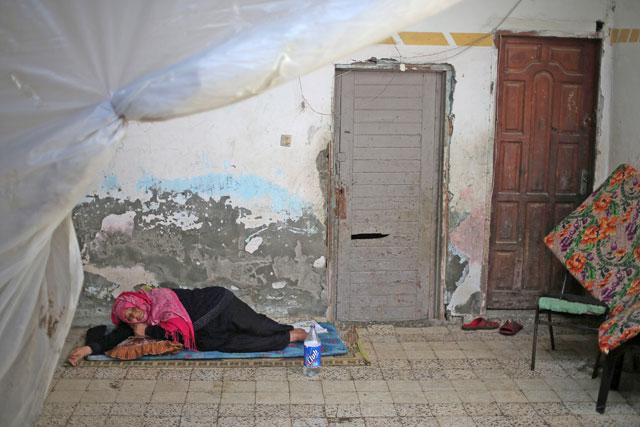You are here
Israel to reduce Gaza power, feeding fears of unrest
By AFP - Jun 13,2017 - Last updated at Jun 13,2017
GAZA CITY, Palestinian Territories — Israel will reduce electricity supplies to the Gaza Strip after funding cuts by Palestinian President Mahmoud Abbas, an Israeli minister said Monday, worsening an already severe shortage in the Hamas-run enclave.
The move has raised fears of a new upsurge in violence, with Israeli and Palestinian militants in Gaza having fought three wars since 2008.
The security Cabinet decided Sunday to reduce the daily amount supplied to Gaza by between 45 and 60 minutes, Israeli media reported.
Gazans currently receive only three or four hours of electricity a day, delivered from the territory’s own power station and others in Israel and Egypt.
Residents who can afford it use generators to power their homes or businesses in the impoverished Palestinian enclave of some two million people.
Israeli Public Security Minister Gilad Erdan said the reduction was due to an ongoing row between Abbas and his rivals Hamas, but he did not detail the scope of the cuts.
Abbas recently decided to “significantly reduce” payments for Gazan electricity”, he told army radio. “It would be illogical for Israel to pay part of the bill.”
Abbas reportedly decided on the move in a further bid to pressure Hamas.
But the reduction has also sparked fears of fresh violence.
Hamas has run Gaza since 2007, when it seized it in a near civil war from Abbas’ Fateh following a dispute over parliamentary elections won by the Islamist movement.
Abbas runs the Palestinian Authority, the internationally recognised Palestinian leadership based in the occupied West Bank.
Multiple attempts at reconciliation between Hamas and Fateh have failed, but the Palestinian Authority (PA) has continued to pay Israel for some electricity delivered to Gaza.
PA official Tariq Reshmawi said for the past 10 years the authority has paid Israel $12.7 million (11.3 million euros) and Egypt $2 million (1.8 million euros) every month for providing power to the strip.
Hamas was responsible for deteriorating conditions in the coastal territory, he told AFP.
“In order to resolve the crisis Hamas must respond to Mahmud Abbas’s offer to end the political divisions,” he added.
‘Catastrophe’
Hamas said the cut was made on Abbas’ orders and termed it “a catastrophe”.
“This decision aggravates the situation and risks an explosion in the Gaza Strip,” it said in a statement.
Several protests against power shortages were held in January, including one in which thousands in northern Gaza walked to the local headquarters of the electricity company.
Hamas security forces dispersed the protesters violently, with shots fired in the air and a number of journalists beaten up.
Further protests were prevented by a show of force by Hamas security and jailed demonstrators were released in the following weeks.
Israel and the PA cooperate in different areas despite the ongoing Israeli-Palestinian conflict, but Israel views Hamas as a terrorist organisation and has imposed a blockade on Gaza.
“My strategy is clear: rehabilitation in exchange for [Hamas] demilitarisation,” Defence Minister Avigdor Lieberman told the Israeli parliament on Monday.
“If we really want to see change in the Gaza Strip, these are the key words.”
Electricity is a major concern in the hot and cramped territory, which is currently marking the holy Muslim fasting month of Ramadan.
The United Nations warned last month that the energy crisis was severely harming water supplies and health services and could trigger an outbreak of violence.
It said that 100,000 cubic metres of raw sewage was being discharged into the Mediterranean every day because treatment plants are unable to fully operate.
Erdan said an escalation in the conflict was not inevitable.
“It is not definite this will cause a military confrontation. It is possible that the Palestinians begin to understand the catastrophe that Hamas means for them,” he said.
Related Articles
GAZA CITY, Palestinian Territories — The Gaza Strip’s sole power station has been fired up again, the energy authority in the Palestinian en
GAZA CITY, Palestinian Territories — Thousands of protesters in the Gaza Strip on Sunday called on Palestinian President Mahmud Abbas to res
RAMALLAH, Palestinian Territories — The Palestinian Authority (PA) said on Wednesday it had agreed to restore payments for electricity


















